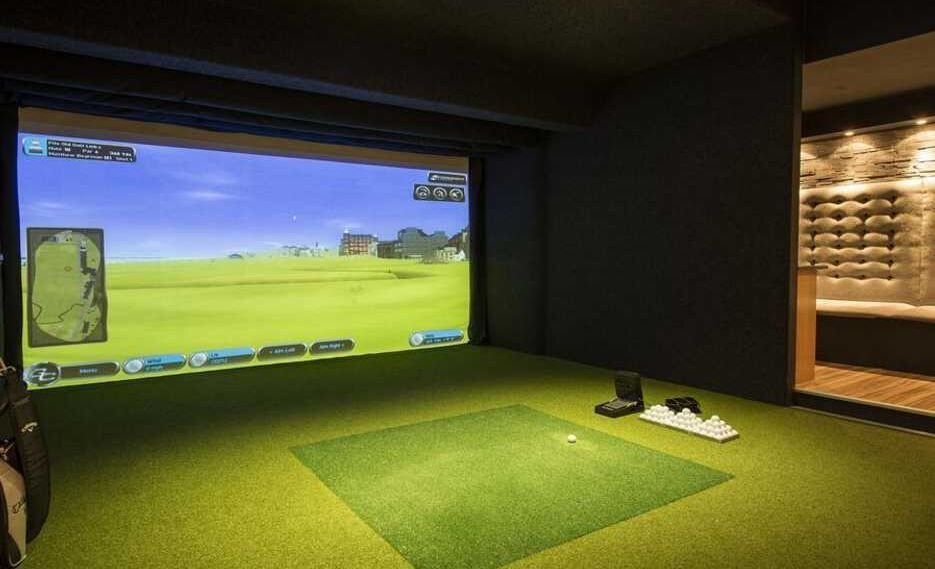Golf Simulators for COVID-19 lockdown: What you need to know
Avid golfers can’t take to the links like they normally would right now. Instead, many of them are taking advantage of golf simulators, bringing the course to them. If you’re frustrated that you can’t work on your swing, this could be a good solution—and they have a lot of benefits in the long run, too.
Want to know more? Let’s dig into the details of golf simulators so you can decide whether it’s something that will work in your home.
What Is a Golf Simulator?
Golf simulators are software programs that use sensors to track the angle, direction, and velocity of your shots. This data is then used to give a virtual representation of your game, letting you play golf without actually being at a golf course.
Obviously you need more than just a software program to pull this off. Since you don’t want to hit golf balls at a TV, you’ll need a high-quality projector for the image (and an accompanying screen to project onto). Along with this, you’ll need a pad to hit off of and a net to catch the balls before they can damage your walls. Some golf simulators come with all of these components included, but for most you’ll need to buy at least a few of them separately.
How Much Does a Golf Simulator Cost?
That depends on the level of simulation you’re looking for. High-end golf simulators can cost £4,000 or more. These systems are designed for professional golfers, though, and are honestly more than even a dedicated hobbyist needs.
If you already have a projector and a computer capable of running graphic-intensive software, you can get away with a budget of around £400-£650 for the software and peripherals. If you need a projector and screen, add between £650 and £1,500, with the visual quality rising the more you’re able to spend. You can get a decent gaming computer for under £800.
How Much Space Does a Golf Simulator Need?
Ideally, your room should be at least 10 feet wide, 10 feet long, with a ceiling that’s 9 feet high. If you’re on the shorter side, you can get away with a slightly lower ceiling. You can also compromise slightly on the width, playing in a room as narrow as 8 feet, especially if you’ll be the only one playing and don’t need to think about both left- and right-handed shots.
The most important dimension is the room’s length. If you’re playing in too short of a room, you won’t be able to complete a full swing. You don’t want to have to pull back because you’re too confined. Also keep in mind you’ll want to leave a foot or two of space behind the net, which will have some give when the balls hit it.
Advantages of Golf Simulators
Golf simulators are great even in a non-lockdown world. If you’re still on the fence, considering these points could help you make your decision.
They improve your swing. Most golf simulators have built-in software to analyse your swings and shots. This feedback can help you identify weaknesses you might not even have known you had.
You can play anytime. A golf simulator lets you play any time of the day, and in any weather. It also eliminates travel time to and from the course, so it’s easier to fit a round into your schedule.
They let you play on more courses. Many golf simulators include famous locations like the Old Course at St. Andrews or Augusta National Golf Club, places most players would never get the chance to play otherwise.
You can use the projector for other things. Any projector suitable for a golf simulator will also be excellent in a home theatre, or for a truly immersive experience playing other video games.
The Final Word
You may feel some sticker shock when you first look at the price of golf simulators. Consider how much you normally spend in green fees and travel expenses, though. For many golfers, a simulator can pay for itself after just a few rounds when you look at it from this perspective. We hope this article has inspired you to get one of your own!
This article was written by Karl Kennedy, author of Projector Top. Read his article: The Best Projector for Golf Simulators in 2020.

